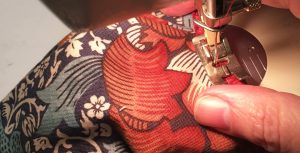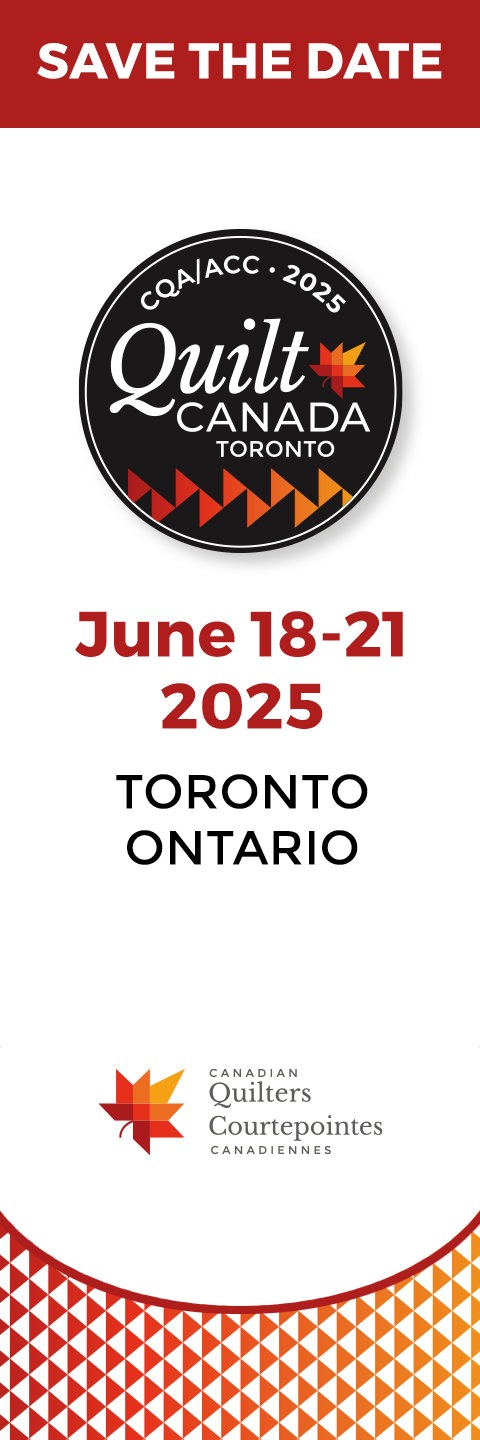In April, a friend asked me to make masks for her family. This was the first of many such requests; I am known to be a prolific stitcher. I went to the internet to search for a pattern and found a group called Canada Sews, a national group formed on Facebook in late March to create and distribute masks made by volunteers for front line workers in their fight to care for those with the COVID-19 virus. There I learned enough to develop several prototypes and began to produce cloth face masks. As I did so, I began to feel a sense of history haunting my work.
For some time now I have been researching Canadian Red Cross quilts. During WWII, the women of Canada voluntarily sewed hundreds of thousands of quilts for the Canadian Red Cross. These quilts were transported to Britain to be distributed by the British Red Cross, primarily to civilians (who lost their homes in the bombings), hospitals, public bomb shelters, military barracks across Britain, and to children evacuated to the country. The quilts were scrappy, meaning they were made from whatever clothing and textiles women had available to cut up and repurpose. In fact, the Red Cross asked women not to buy fabrics for the quilts, but to use what they had. Shirt and pyjama factories offered off-cuts of shirting and flannel fabrics, and military uniform and suit manufacturers offered wool scraps.
Around 1942, the Red Cross began to supply the cotton batting – the layer of warmth inside the quilt – and the backing, which was typically a plain unbleached cotton or a soft grey striped flannel. Most of the piecing of the tops of the quilts appears to have been done individually at home. Then the women would gather around quilting frames in living rooms, churches, synagogues, Women’s Institute Halls and at meetings of the Imperial Order of the Daughters of the Empire to hand quilt the pieced tops together into finished quilts.

There is scandalously little research in Canada on this vast yet very moving enterprise. I have found reference to this quilt making in period newspapers across Canada and in two NFB newsreels of this period. Women all across Canada sewed voluntarily for the Red Cross for six long war years. Cursory research puts the number of quilts made well over 350,000. To understand that figure in hours, a moderately experienced stitcher can make a 2020 mask in an hour or less. A full-sized quilt, at minimum, will take 50 person hours, but most experienced quilters agree that this is a conservative number, especially when quilting by hand.
At the same time, women who were not working in factories or on farms, or who had not enlisted in the military, were sewing clothing for British civilians, knitting socks for soldiers and layettes for babies, and packing shipments for the Red Cross, in addition to their own domestic work and child rearing.
Of course, sewing in response to challenging times is nothing new. Women organized sewing for military needs during the American Civil War and made hundreds of thousands of quilts for soldiers on the battlefield and in infirmaries. A recent example of this textile making occurred after the 2018 Humboldt, SK, accident, when a request for quilts for each family affected by this tragedy inspired the making and gifting of over 5,000 quilts, sent in from all over the world. Women sew and knit and crochet in response to tragedies and loss worldwide.
Sadly, the social distancing required as the world battles the current pandemic precludes us from gathering as in the old-fashioned quilting bee. But I observe that, in some way, social media has filled in some of those gaps, creating community – a place for makers to share their successes, resources, challenges and tips, stories, and photos of their work.

As of writing this, there are still daily conversations between members of the Canada Sews Facebook group about where to get supplies, how to improve construction, new mask designs and patterns, how to organize pickup and distribution, tips for how to fix the tension on sewing machines, plus lengthy conversations with other sewists. Women generously offer to share their stash of fabric – fabrics collected over years of quilting – with other women who have no fabric. Women who haven’t sewn in years are dusting off their sewing machines and taking up the cause. They are now making other PPE such as scrub caps and gowns, in addition to continuing to make masks. This online community is helping to sustain interest and momentum by providing common goals, friendship, and social support, much like the quilting bees did 80 years ago during WWII.

As I examine this current mask making, and the WWII quilt making, I reflect that these efforts meet a need for both the maker and the recipient. The recipient is reminded that someone, anonymously, has taken the time to provide care and love and encouragement in a real and useful way. The maker finds a place to channel their creativity, sympathy and kindness into a tangible and helpful gift made of the materials that give comfort to all humanity. At the same time, I know that we, as makers, are nurtured, restored, given purpose and an outlet for our own feelings – of helplessness, perhaps our own sorrow and loss, our own need to make a contribution, to help in some way. Stitch by stitch we work through the emotions that relate to the times we are living through, just as I imagine Canadian women did as they created quilts for the war effort between 1939 and 1945.


